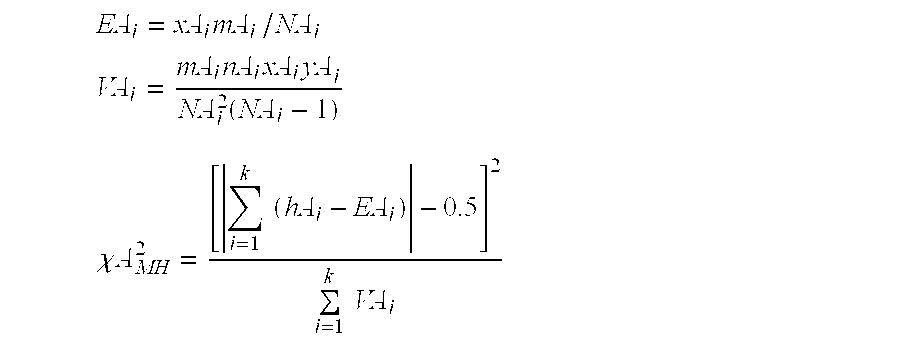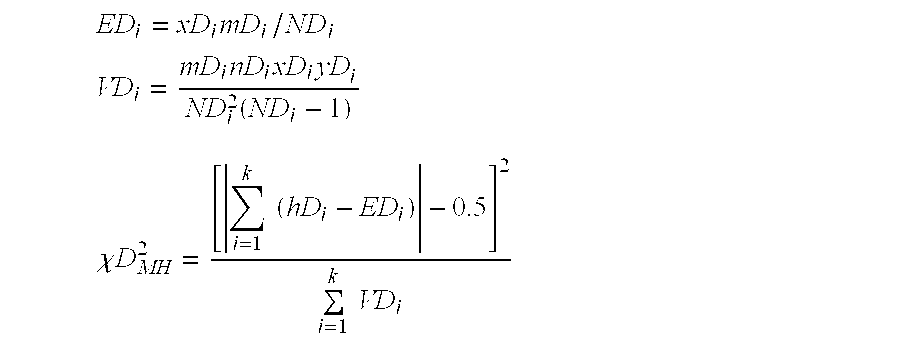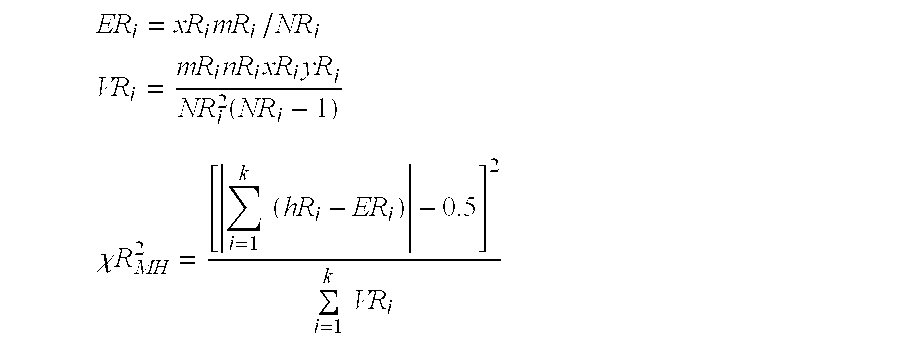Method for determination of progression risk of glaucoma
a glaucoma and risk technology, applied in the field of glaucoma progression risk determination, to achieve the effect of reducing the risk of glaucoma
- Summary
- Abstract
- Description
- Claims
- Application Information
AI Technical Summary
Benefits of technology
Problems solved by technology
Method used
Image
Examples
example 1
DNA Extraction from Specimens
[0189]In DNA extraction from specimens, a commercially available automated nucleic acid extraction apparatus (QUIAGEN, BIOROBOT (registered trademark) EZ1), and a kit for extraction of a nucleic acid (EZ1 DNA Blood 350 μl Kit) compatible to the extraction apparatus and in which nucleic acids absorbed to magnetic beads were collected by a magnetic force were used. A total DNA was extracted in accordance with the instruction manuals of the apparatus and kit. According to the present method, a total DNA of about 5 μg was obtained from 350 μL of a blood specimen.
example 2
Analysis of Single Nucleotide Polymorphism
[0190]In the analysis of single nucleotide polymorphisms, a commercially available microarray type single nucleotide polymorphism analysis kit (Affimetrix (GeneChip(registered trademark) Human Mapping 500K) (hereinafter also referred to as microarray) capable of analyzing about 500,000 known single nucleotide polymorphisms on the human genome was used. In the detection of single nucleotide polymorphisms, a scanner (Affimetrix (GeneChip(registered trademark) Scanner 3000)) compatible to the kit was used. In the analysis of single nucleotide polymorphisms, a specialized analysis software (Affimetrix (GTYPE(registered trademark))) was used.
[0191]The total DNA extracted in Example 1 was treated in accordance with the instruction manuals of the kit and apparatus, and applied to a microarray, and a single nucleotide polymorphism existing on the DNA extracted from the specimen was analyzed. Briefly explaining, a sample obtained by treating 250 ng o...
example 3
Comparison of Single Nucleotide Polymorphisms Between Glaucoma Patients and Non-Patients
[0193]The comparison on single nucleotide polymorphisms associated with a disease was made in accordance with the method used in the studies on genes responsible for age-related macular degeneration by Klein et al (Science, 308, 385, 2005).
[0194]Primary open-angle glaucoma patients and normal tension glaucoma patients that were diagnosed on the basis of Guidelines offered by Japan Glaucoma Society were assigned to a glaucoma patient group, and healthy individuals that were confirmed to have no family history of glaucoma according to a medical interview were assigned to a non-patient group. Blood donated under the consent on free will of the participants after having sufficiently explained the contents of studies from 418 cases of the glaucoma patient group and 300 controls of the non-patient group was used as specimens, a total DNA was extracted from the specimens according to the method describe...
PUM
| Property | Measurement | Unit |
|---|---|---|
| length | aaaaa | aaaaa |
| intraocular pressure | aaaaa | aaaaa |
| intraocular pressures | aaaaa | aaaaa |
Abstract
Description
Claims
Application Information
 Login to View More
Login to View More - R&D
- Intellectual Property
- Life Sciences
- Materials
- Tech Scout
- Unparalleled Data Quality
- Higher Quality Content
- 60% Fewer Hallucinations
Browse by: Latest US Patents, China's latest patents, Technical Efficacy Thesaurus, Application Domain, Technology Topic, Popular Technical Reports.
© 2025 PatSnap. All rights reserved.Legal|Privacy policy|Modern Slavery Act Transparency Statement|Sitemap|About US| Contact US: help@patsnap.com



